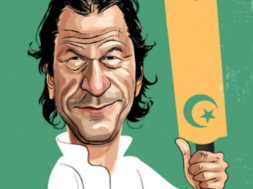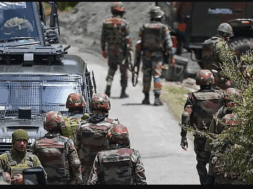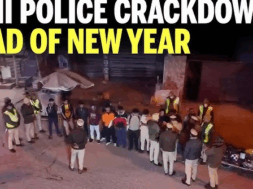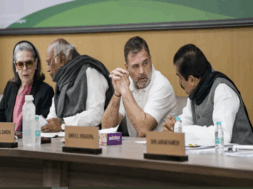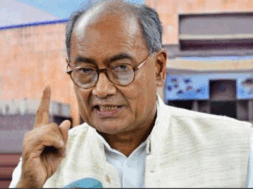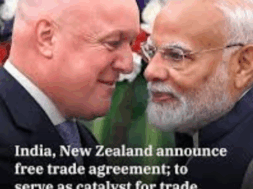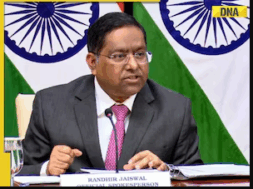
Roving Periscope: How Imran may have dug the pitch for the army, opposition
Virendra Pandit
New Delhi: With the Supreme Court directing the Prime Minister to face the no-confidence vote in Pakistan’s National Assembly on Saturday (April 9), Imran Khan will lose his job twice a week. But will he also lose the forthcoming elections as spectacularly as he lost his premiership?
It may depend on when the Election Commission actually holds the polls. In one instance, the poll panel had assured holding the elections in 90 days, but it actually did so 11 years later.
Now, it has said it can hold elections in the next six to seven months. That means by December 2022.
By that time, the Opposition-led government, probably headed by Shahbaz Sharif and his allies, would have gathered enough anti-incumbency sentiments, given the runaway inflation and the continuing devaluation of the currency—on Friday, the US dollar was sold for 186.4 Pakistani rupees.
And also, by then, the flood of anti-Imran sentiments would subside to an extent. He can claim his enemies prevented him to make a Naya Pakistan and design the country on the Riyasat-e-Medina model That is, he would now have a level-playing field, vis-à-vis his rivals, by the time the next elections take place.
And he has already said he will play until the last ball! He may yet rise like a phoenix.
That is where the importance of what Imran said—that the US and the Opposition sabotaged his plans—lies. There had always been an anti-American sentiment among a significant section of the Pakistani masses who nursed rabidly anti-US militant groups. But these anti-US sentiments had no strong political voice. Imran spotted this ‘vacancy’ and offered himself to fill it.
By crystallizing a new narrative of anti-Americanism, he may also have dug the pitch both for the Pakistani Army and the combined Opposition who will now have to fend off allegations of being the pro-US forces.
His enemies may have rejected his claim that the US supported the Opposition to plot his ouster via a no-confidence motion in parliament. But he has actually crystallized a new narrative and may have aggregated the anti-American voters for his Pakistan Tahreek-i-Insaf (PTI).
Pakistan Army chief General Qamar Javed Bajwa, who tried to balance Khan’s rhetoric against the US, may know what the outgoing Prime Minister intended to do: to emerge as Pakistan’s voice against American hegemony; if he wins, he could be China’s viceroy in Islamabad!
That is why don’t write Imran off yet. Election results would probably prove whether Pakistan would finally reject the US hegemony and embrace its “iron friend” China fully.
For India, such an open Islamabad-Beijing axis would be a new challenge — when it might have on its borders two bankrupt, unstable, and failing states, Pakistan and Sri Lanka, in the next six months.
Reports from China show this emerging trend. Officially, Beijing has not commented on the situation in these two South Asian countries, and Chinese state-controlled media have so far just factually reported the events.
But the Chinese social media is abuzz about the uncertainty in the two nations. While the political crisis in Pakistan has elicited more reporting by Chinese state media, the economic crisis in Sri Lanka is also being discussed by the Chinese people. And all this under the 24×7 watch of Beijing.
Pakistan’s political turmoil has been trending on Chinese media for some weeks. Zhang Weiwei, China’s leading ‘public intellectual’—a euphemism for unofficial Chinese officials—recently praised Imran Khan and compared him with former Pakistani dictator General Zia-ul Haq. He also revealed that President Vladimir Putin spoke with the visiting Pakistani Prime Minister, Imran Khan, for three hours on February 24 (when Russia invaded Ukraine).
On Monday this week, just a day after Imran had the National Assembly dissolved, the hashtag “Pakistan” was the number one trend on Weibo, the Chinese variant of Twitter. Another hashtag “Pakistani prime minister dismissed” was the number two trend on Baidu, China’s Google, the search engine, according to the media reports.
In particular, the Chinese people lapped up Imran Khan’s allegations about “foreign interference”, a popular topic in mainland China.
Nearly five million Chinese viewed the hashtag “Pakistan publicly named the United States for interfering in internal affairs” on Weibo. Another hashtag, “Pakistan Prime Minister accused the United States of intending to subvert the regime three times in 24 hours” was viewed by over 4.7 million times.
Likewise, Sri Lanka is a hot topic in China.
The hashtag “Sri Lanka economic crisis” was used on Weibo. With the Chinese debt trap cited as a major reason for the Sri Lankan crisis, some Chinese commentators tried to distance Beijing from the political turmoil in the island country.
“Although over 50 percent of Sri Lanka’s foreign debts come from the international capital market, China only accounts for 10 percent, even lower than Japan (ADB), but the Indian media still hype Sri Lanka’s recent economic and political crisis as a result of Chinese loans and to slander the Belt and Road Initiative,” remarked a Weibo blogger.
This is what China’s state-controlled media also says.
“The Asian Development Bank (ADB) came in second with a 14.3 percent share, providing USD 4.6 billion in loans. Japan at 10.9% percent and China at 10.8 percent, each providing about USD 3.5 billion in loans. The rest of the debt is owed by countries such as India and international institutions such as the World Bank and the United Nations,” Phoenix TV insisted.
Officially, Beijing blamed the “West” for the debt-trap narrative in Sri Lanka.
“‘China Debt Trap’ is a conspiracy theory, which reflects a US-led obstruction of China’s ‘Belt and Road’ initiative, which is essentially a political tool. The Sri Lankan Hambantota port, which was built and leased by a Chinese company, is not part of the debt trap, it is not a heavy burden, nor is it a so-called debt-for-equity swap, nor is it an infringement of Sri Lanka’s sovereignty,” said Barry Sautman, Professor Emeritus at The Hong Kong University of Science and Technology.
